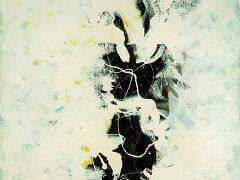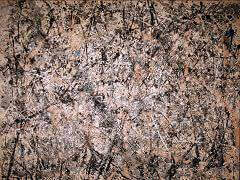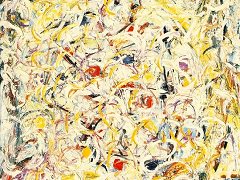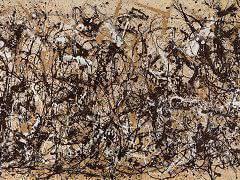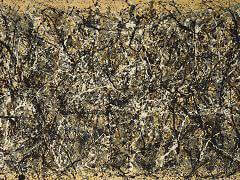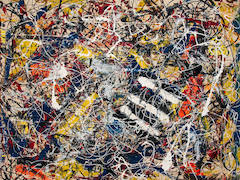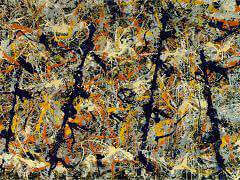Sea Change, 1947 by Jackson Pollock
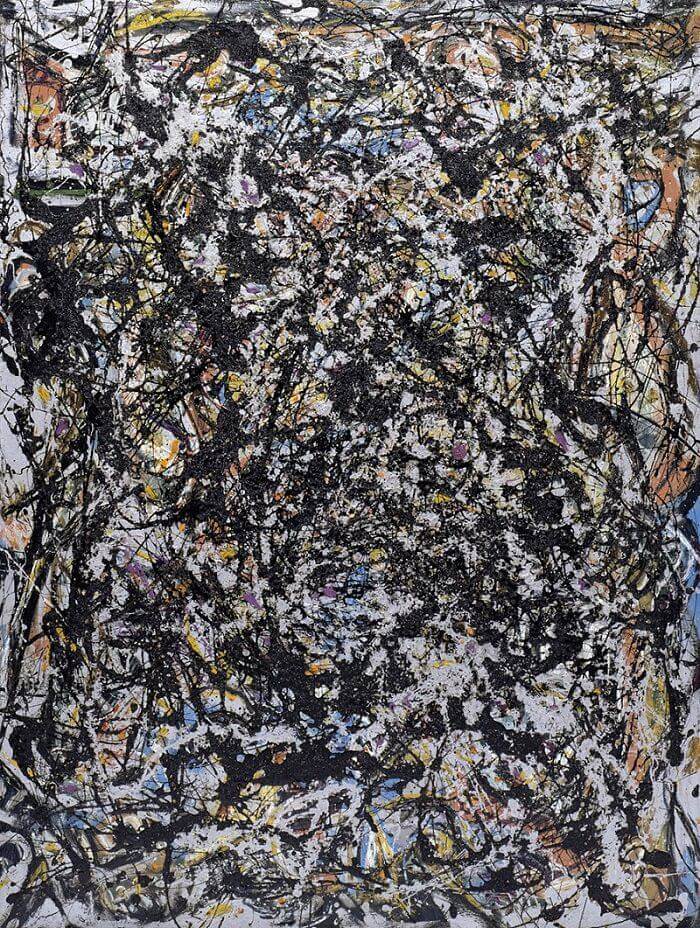
The title Sea Change is drawn from the exquisitely lyrical death poem of The Tempest by Shakespeare. The Shakespearean reference seems appropriate for the Jackson Pollock who declared "I am nature," because Shakespeare, for over two hundred years, has been paradigmatic for precisely that Romantic conception of the artist. From here we could also note that this poem about the death and transfiguration of the father is an entirely appropriate reference for an artist who is just beginning to succeed in sublimating the inheritance of analytic cubism and thereby build his own world of magic on the preserved and transmutated body of his most anxiously regarded father, Picasso.
The painting - or at least the back of the canvas that it is painted on - appears in photos taken by sculptor Wilfrid Zogbaum in Pollock's studio around 1947. The picture was made in two separate phases. First, Pollock painted it in a relatively traditional way: brushing paint onto a vertical canvas. Then, crucially, he decided to lay the picture flat on the floor and drip much thicker layers of aluminum and black house paint on it. He also sprinkled pebbles into the wet paint. What makes Sea Change special is that the second phase was not the wildly splattered "action painting" that many people imagine. At some stage in the process, Pollock painted linear guidelines in dark-brown paint and then went to great trouble to obscure most of them with fine trickles of black and aluminum.



